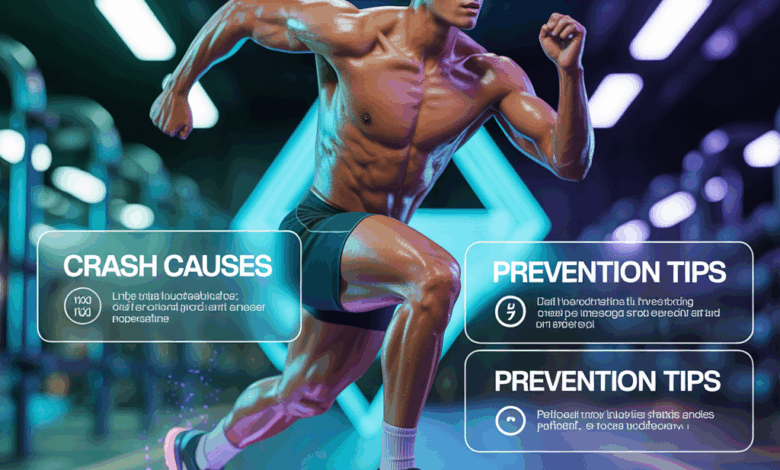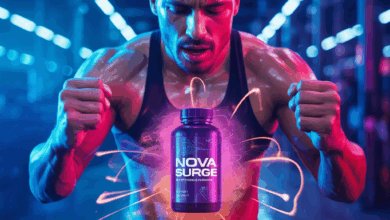Pre Workout Crash Causes and Tips to Prevent — Stop Losing Energy Mid-Session

Have you ever felt invincible as you gulp down a pre-workout, only to hit a wall halfway through your set? You’re not alone. The dreaded pre-workout crash can turn a great training day into a struggle, but understanding pre workout crash causes and tips to prevent it can save your session — and your gains.
What is a “pre-workout crash” and why it happens
A pre-workout crash is a sudden drop in energy, focus, or motivation that occurs during or after exercise. It’s often linked to ingredients in stimulant-based supplements, poor nutrition timing, or hydration issues. Symptoms include dizziness, shakiness, brain fog, heavy legs, and a steep decline in performance.
Common physiological triggers
- Caffeine and stimulant rebound: A rapid spike in energy followed by a drop as stimulants wear off.
- Blood sugar swings: Sugary pre-workouts or carb-heavy snacks can cause insulin spikes then hypoglycemia.
- Dehydration and electrolytes: Low fluid or sodium can impair muscle function and mental focus.
- Overstimulation and tolerance: Chronic high-dose stimulant use can blunt response and lead to worse crashes.
- Inadequate fueling: Fasted training without proper nutrient timing can drain glycogen stores faster than your body can compensate.
pre workout crash causes and tips to prevent
This section dives into practical fixes. Here are evidence-informed strategies and real-world adjustments you can make right away.
1. Balance what you eat before training
Opt for low-GI carbs with a bit of protein 60–90 minutes before a tough workout. Examples: oatmeal with a scoop of protein, Greek yogurt and berries, or a banana with nut butter. These choices provide steady energy and reduce the risk of blood sugar crash.
2. Time caffeine and control your dose
Take caffeine 30–45 minutes before training and keep doses moderate (100–200 mg for many people). Avoid stacking multiple stimulant sources (strong coffee + pre-workout powder + energy gum). If you crash frequently, try a stimulant-free pre-workout or reduce frequency to lower tolerance.
3. Hydration and electrolytes matter
Start hydrated and sip fluids during workouts. For sweaty sessions or long training, add electrolytes (sodium, potassium) to avoid cramping and fatigue. A simple real-world example: a client who replaced water-only with an electrolyte drink eliminated mid-run dizziness.
4. Use smarter pre-workout formulations
Look for products with moderate caffeine, added beta-alanine or citrulline for pumps, and minimal simple sugars. Or make your own stack: black coffee, creatine, and BCAAs can be effective without the sugar crash.
5. Plan workouts around nutrition & sleep
If you train fasted, keep intensity moderate (steady-state cardio, mobility, light resistance). For heavy lifting, eat first. Prioritize 7–9 hours of sleep — chronic sleep deprivation raises perceived exertion and increases the likelihood of an energy crash.
Workout variations and practical session changes to avoid crashes
Changing your approach during a workout can help you finish strong instead of fading out.
If you feel a crash coming — stop, reassess, adjust
- Drop intensity: switch from heavy sets to supersets with lighter loads.
- Switch modality: trade high-intensity intervals for steady-state cardio or circuit-style resistance work.
- Take an active recovery break: walk, drink fluids, and eat a small carb snack (half a banana or a few dates) before resuming.
Sample session adjustments
– Strength day: If energy dips mid-session, reduce volume and focus on compound lifts with lower rep ranges.
– HIIT day: Shorten the intervals or increase rest periods.
– Endurance day: Add a fueling station at 45–60 minutes (sports drink or gel) to prevent late-stage bonking.
Healthy lifestyle habits that reduce pre-workout crashes
- Cycle stimulants: Take 1–2 non-stimulant weeks each month to keep caffeine effective and prevent tolerance.
- Consistent meals: Spread macronutrients evenly across the day to stabilize blood sugar.
- Stress management: High stress raises cortisol and impacts energy. Try breathwork, short walks, or a sleep routine.
- Supplement smart: Creatine, beta-alanine, and proper multivitamins support performance without crashes.
Real-world examples
Case study 1: Sarah, a busy teacher, used to drink pre-workout + coffee and crash after 30 minutes. She switched to a single espresso 45 minutes before her AM strength sessions and added a small breakfast: chia pudding with berries. Crashes stopped, and her lifts improved.
Case study 2: Darnell, a weekend runner, found he bonked on long runs. Introducing electrolyte tablets and a mixed-carb gel at 50 minutes improved endurance and mental clarity.
Frequently Asked Questions
1. Why do I crash after taking pre-workout?
Most crashes are due to stimulant rebound, rapid blood sugar drops from sugary pre-workouts, dehydration, or insufficient calorie intake before intense sessions.
2. Can I prevent a caffeine crash during workouts?
Yes. Use moderate doses, time caffeine 30–45 minutes before training, avoid multiple stimulant sources, stay hydrated, and eat a balanced snack beforehand. Cycling off caffeine occasionally also helps.
3. Is it okay to train fasted if I want to avoid crashes?
Fasted training is fine for low-to-moderate intensity workouts. For heavy lifting or high-intensity intervals, it’s better to consume a small carbohydrate + protein snack beforehand to prevent hitting the wall.
Conclusion — take action to stop mid-workout crashes
Understanding pre workout crash causes and tips to prevent them is the first step toward more consistent, productive training. Try adjusting your pre-workout composition, timing, hydration, and stimulant use. If you want personalized plans, check our workout routines and browse our nutrition guides for meal timing ideas. For day-to-day recovery and lifestyle strategies, see our wellness tips.
Ready to train smarter, not harder? Apply one tip this week — swap a sugary pre-workout for a balanced snack or reduce your caffeine dose — and track how your sessions feel. If this helped, sign up for updates or share your experience in the comments below.





